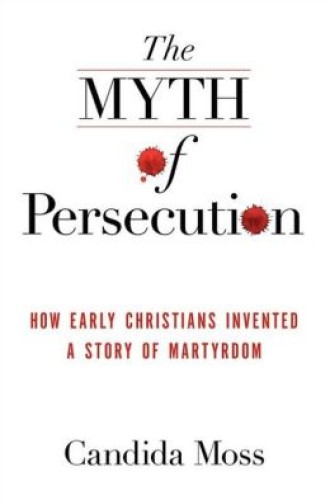The Myth of Persecution, by Candida Moss
Candida Moss unravels a common misperception: that Christianity faced murderous government-sanctioned persecution for its first three centuries, a period in which “the blood of the martyrs” supplied seed for the growing church. Grounded in ten years of research on martyr traditions, Moss’s basic position will surprise few historians. Though early Christian texts assign martyrdom a constitutive role in the church’s story, non-Christian sources refuse to corroborate this picture.
But beyond this common observation, Moss has much more to say: early Christians rarely experienced the sort of suppression we have imagined. Even our most reliable martyrdom stories, which Christian authors deployed in the service of various later causes, betray significant degrees of elaboration and anachronism. And many of the martyrdom accounts amount to pure, albeit pious, fiction.
Like the ancient poets, Moss at once instructs and entertains. Admirably weaving clear argumentation into vivid narration and demonstrating authoritative command of the primary sources, Moss advances her case by means of several important arguments. She also transgresses the boundary between historian and theologian and calls the church to repentance. She contends that the martyrdom narrative poses grave dangers, having contributed to everything from mild alienation to outright atrocity throughout the church’s history.





